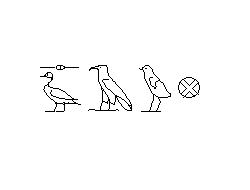
Eine Stadt im Westdelta, deren Überreste hauptsächlich in das 8. - 6. Jhdt. v. Chr. datieren. Ihre Schutzgöttin war Neith, deren Kult bis in die 1. Dynastie zurückreicht, was darauf hinweist, daß Sais von der späten Prädynastischen Zeit an besiedelt war.
Sais war bereits in der Frühdynastischen Zeit ein bedeutendes religiöses Zentrum, und das 'Fest der Athena (Neith)', das 'Lampenfest' und das Passionsspiel des Osiris, das am Heiligen See von Sais stattfand, werden alle von Herodot erwähnt. Herodot erwähnt auch, daß es innerhalb der Umfassungsmauern des Tempelbezirkes der Neith ein Osirisgrab gab. Sais war einer der mythologischen Zielorte bei Bestattungsriten und hatte einen guten Ruf als Zentrum der Chirurgie und der Weberei.
Politisch bedeutend wurde Sais erst, nachdem lokale Herrscher sich im letzten Viertel des 8. Jhdts. v. Chr. kurzzeitig den Kuschiten widersetzten und die 24. Dynastie gründeten. Nach der Invasion Ägyptens 671 v. Chr. durch Assarhaddon wurde Necho als Herrscher von Sais und Memphis eingesetzt. Sein Sohn Psammetich I. konnte diese Unabhängigkeit bewahren und sogar die Kontrolle über ganz Ägypten erlangen. Er gründete die 26. Dynastie mit Sais als Residenz.
Sais ist nie systematisch ausgegraben worden. Die Überreste der Tempel und Gräber, die Herodot beschreibt und Strabo erwähnt, sind fast völlig verschwunden.